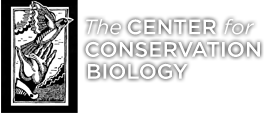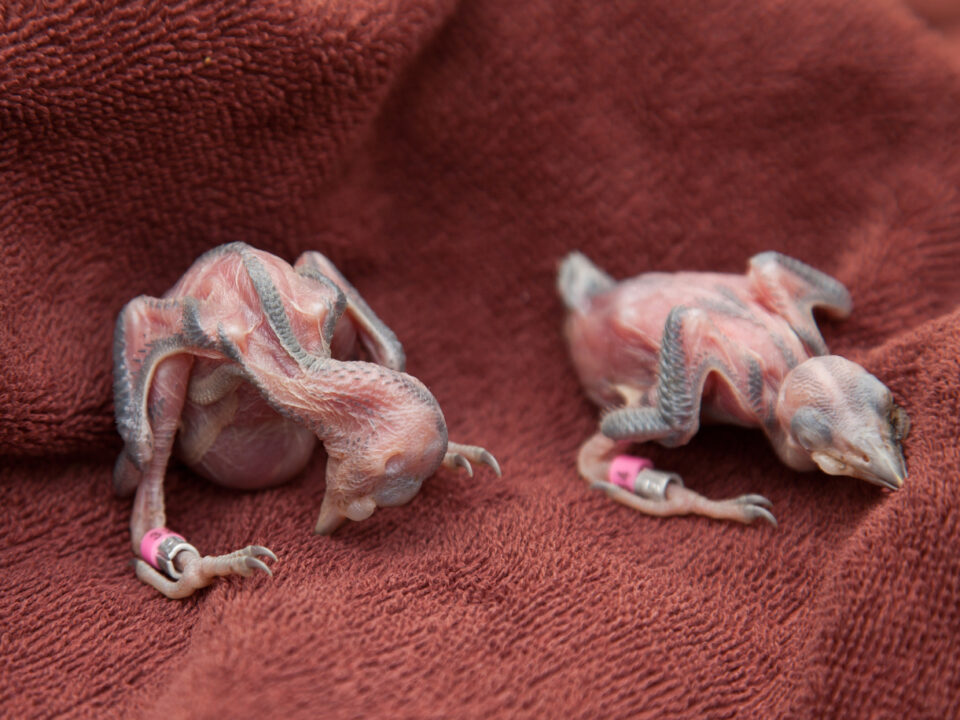Tracking migrant eagles to the Chesapeake Bay
Aerial surveys show a 50% decline in Virginia whimbrel numbers
October 14, 2008United States Nightjar Survey Network expands
October 17, 2008
Written by Elizabeth Mojica
October 15, 2008
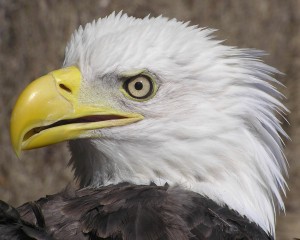
Adult bald eagle captured and banded on Chesapeake Bay. Photo by Bart Roberts.
This fall, CCB tracked bald and golden eagles as they migrated south to winter in the Chesapeake Bay region. Eagles from northern latitudes typically migrate south in search of milder climates and unfrozen water to hunt prey. The Chesapeake Bay attracts large numbers of eagles with abundant waterfowl and fish prey. Eagles annually congregate at well known wintering sites in the Bay like Conowingo Dam, Mason Neck NWR, Blackwater NWR,Caledon State Park, Aberdeen Proving Ground, Rappahannock River, Presquile NWR, and many others.
CCB biologists trapped migrant eagles on the shores of the upper Chesapeake Bay in late winter 2008 as part of a US Army funded project. CCB captured 13 bald eagles and 2 golden eagles suspected to be visiting migrants and fitted them with solar-powered GPS-PTT satellite transmitters.
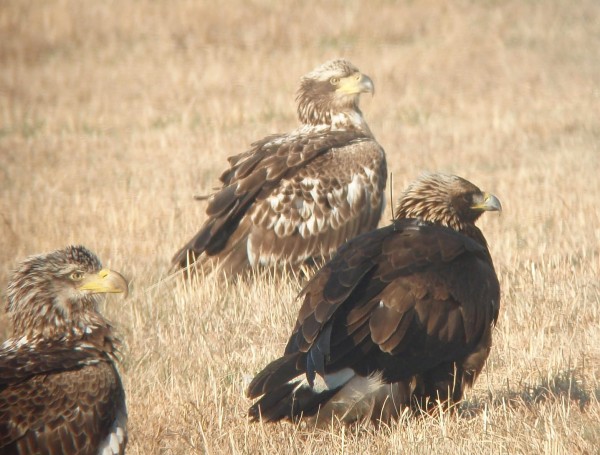
Golden eagle (right) with backpack satellite transmitter and two sub-adult bald eagles at a baited capture site in the northern Chesapeake. Photo by Fletcher Smith.
When spring weather fronts began moving through in late March and early April, the transmittered eagles left the Bay and migrated north 300-1,500 miles. Summering destinations included Maine (1), Pennsylvania (1), Vermont (1), New Brunswick (1), Labrador (4), and Quebec (5). Both golden eagles summered in northern Quebec.
After spending this summer in milder northern climates, eagles began returning to Chesapeake Bay in mid-September. Cold fronts will continue to push more migrant eagles south into the Bay region throughout the winter months. The National Bald Eagle mid-winter survey is conducted during the population peak in January and February each year.
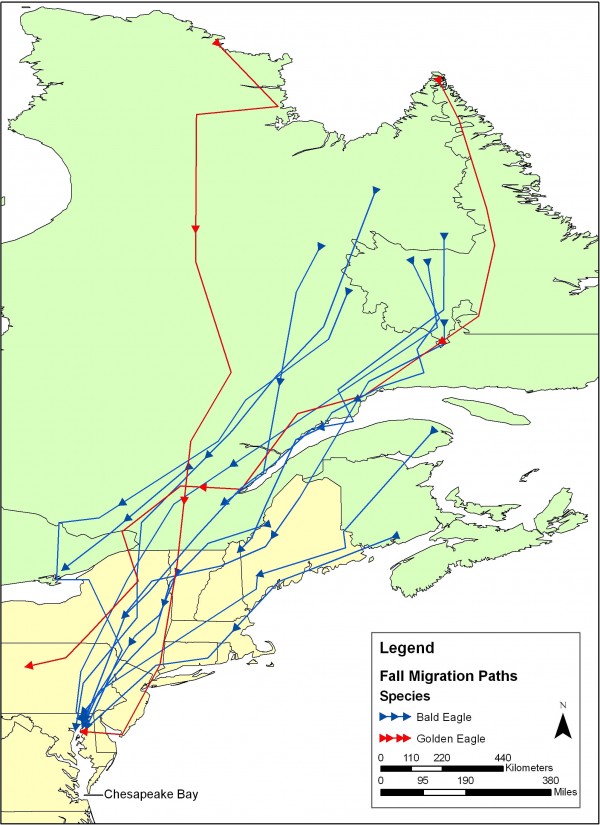
Fall 2008 bald and golden eagle migration pathways. Map by the Center for Conservation Biology.
Related posts
Adult female from Elkins Chimney territory. Both the female and male were lost from this site between 2024 and 2025 nesting seasons and were not replaced. This territory has been occupied since 1995. Five territories were vacated between 2024 and 2025 along the Delmarva Peninsula in VA. Photo by Bryan Watts
